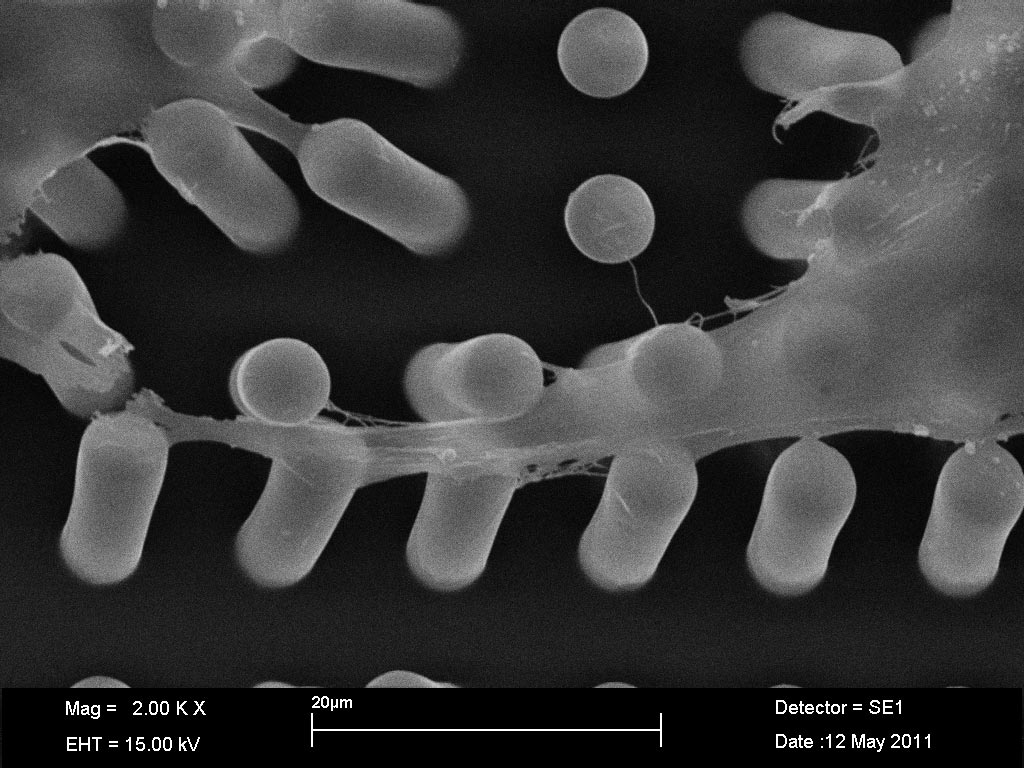Regenerative biomechanical cues
Regenerative biomechanical cues are for example the Young’s modulus (e.g. material stiffness) and the patterning of stem cell anchoring points. Oral tissues feature very different properties with elasticities ranging from hard tissue such as bone and teeth to soft tissue such as gum and periodontal ligament. Further, tissue defects and wound dressings exhibit interfaces of different textures that act on stem cells. Those cells sense biomechanical properties by anchoring via integrin-based focal adhesion sites that facilitate actin fiber assembly and reciprocal transformation of biomechanical to biochemical signals. In this context, we focus on how stem cell performance can be directed by such biomechanical cues. This information is important for the development of scaffolds suitable for tissue engineering and for predicting the efficiency of stem cell-based therapies.
Publications
Proksch S, Steinberg T, Schulz SD, Sauerbier S, Hellwig E, Tomakidi P (2012). Environmental biomechanics substantiated by defined pillar micropatterns govern behavior of human mesenchymal stem cells. Cell Transplant 21(11):2455-2469
Tomakidi P, Schulz SD, Proksch S, Weber W, Steinberg T (2014). Focal adhesion kinase p125FAK sight on mechanobiology in the context of potential hMSC-based periodontal regeneration strategies. Cell Tissue Res, 357(3):515-526

S
Susanne was P.I. at G.E.R.N. until December 2019
Assoc. Prof. (PD) Susanne Proksch, M.D.
Department of Operative Dentistry and Periodontology Freiburg University Medical Center
EDUCATION
Habilitation at the Albert-Ludwigs University Freiburg, Germany
Doctorate at the Technical University Dresden, Germany
Dental Medicine at Ludwigs-Maximilians University Munich, Germany
Postdoctoral
RESEARCH FELLOWSHIPS
Université Paris Descartes, France

